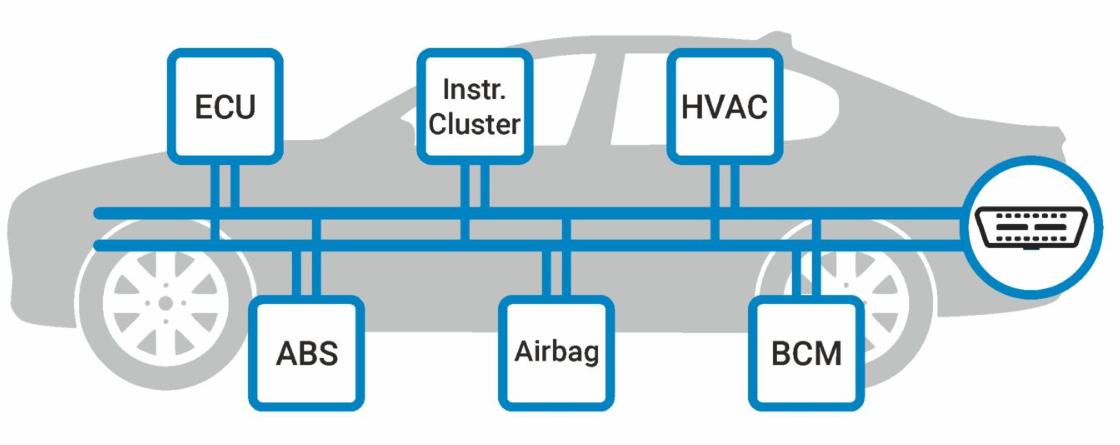“Why are the terms “telematics” and “fleet management" often used interchangeably? Aren’t they NOT the same thing?” asked a Gartner analyst during the vendor briefing we had last week. That’s a very fair question, or perhaps it was more of an observation. Fleet telematics as we know it, has only existed for the last 20-25 years.
No one really knows for sure, but fleet management as a function is likely as old as the first commercial fleets out there. So why do so many telematics service providers market their fleet telematics solutions as fleet management solutions? In this blog article I will explore the history of the fleet management function, how it evolved and transformed over the years and what the next 10-20 years may bring.
A bit of a historical perspective
Butterfield Overland Mail Company, founded in 1857 in the US, is sometimes thought of as the first commercial fleet. They operated around 140 stagecoaches, pulled by mules and horses, and carried mail and passengers across the Western part of the United States. It was a sizable operation that most certainly required “fleet management” oversight. Maintenance of stagecoaches undoubtedly was an important part of ensuring a smooth operation. Wheels, suspension, axles and bearings, body and upholstery — all required regular inspection and repairs. And let’s not forget about horses and mules — feeding and caring for the animals, which effectively served as vehicle “engines” — was part of fleet management of the 1800s! Telematics would at the time seem as crazy as pouring flammable liquid into your vehicle to make it move on its own instead of having horses and mules pull it!

Commercial vehicle fleets played a major role in rapid economic expansion of the 20th century. Mail service typically represented the largest fleet operations of the last century. Post World War II investments into transportation infrastructure such as roads, bridges, tunnels fueled rapid growth of the automobile industry, which in turn fueled commercial transportation.
With time more and more companies, large and small, operated fleets of vehicles to support or enable their business operations. Common goals pursued by the fleet management function responsible for overseeing fleets included increasing productivity, improving efficiency, and ensuring safety of operation.
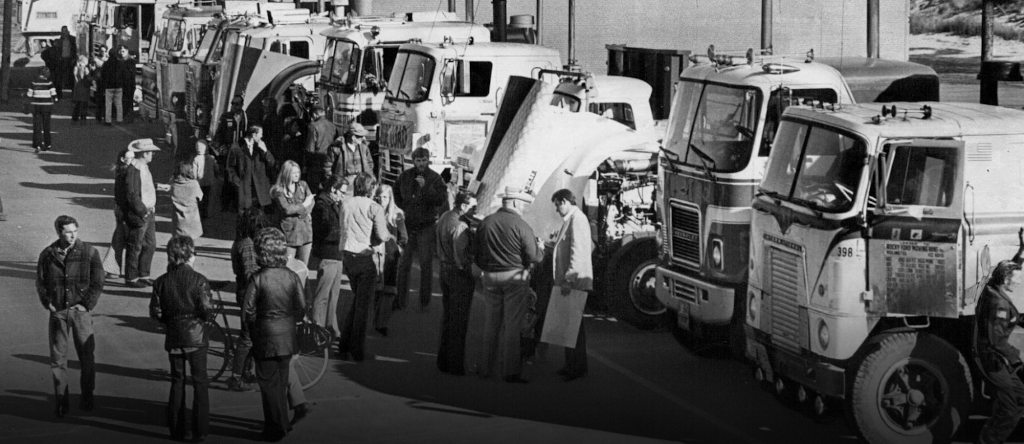
As the computer industry developed in the second half of the 20th century, computers started finding their way into cars. ECUs, or electronic control units were introduced in the 1960s in the US. Advancements in microprocessor technology made ECUs very common by the 1980s in the US and Europe. Individual ECUs controlled vehicle systems — such as engine, transmission, braking, suspension, emissions.
The Controller Area Network (CAN) bus was first introduced into vehicles in 1991. CAN connects all individual vehicle ECUs together and enables communication between them. The significance of this for fleet management was huge. Newly introduced diagnostics port to tap into CAN made it possible to use a single point of external connection to check on the overall health of the vehicle. Another important objective was around controlling emissions. This innovation led to more proactive and efficient maintenance.
Modern fleet management

The most transformative period for fleet management occurred between mid 90s and early 2000s. Three groundbreaking technologies converged, which made fleet telematics possible. GPS technology was made available to civilian use (it actually happened in the 1980s, but full GPS satellite deployment wasn’t completed until 1993), the internet started rapidly impacting how we live and work, and cellular technology made over-the-air data communication possible. By early 2000s dozens of telematics technology companies were formed globally. Gurtam, Geotab, Teltonika, Queclink, Concox, FleetMatics (presently Verizon Connect), Mix Telematics, FleetComplete, and many others got their start in the beginning of the millenia.
So far we spoke about maintenance as a central aspect of fleet management. While an important one, there are various other aspects to keep in mind. Before we go any further, let’s take a step back and make sure we define fleet management to establish better clarity around this function. There’s no one universally accepted definition of fleet management. I tend to think that on a high level there are four high-level aspects that fleet managers focus on when delivering on their responsibilities: efficiency, productivity, safety and compliance. Let’s review each of them and discuss the role modern telematics as it applies to each one:
Efficiency
Efficiency has to do with how well the fleet resources (i.e., vehicles, fuel, tires) are utilized to produce the fixed output. Timely vehicle maintenance and replacement will ensure that the organization maximizes the amount of time the vehicles are on the road and are producing revenue, while minimizing employee downtime. After depreciation, fuel and tires are usually the largest operational fleet expense. Idling and excessive acceleration waste fuel unnecessarily.
With the help of the aftermarket sensors or by tapping into vehicle CAN bus, telematics technology makes it possible to remotely monitor fuel consumption, detect idling, catch possible fuel thefts, and monitor tire pressure. Remarkable ability to remotely and seamlessly obtain DTC codes (should any trigger) allows for predictive maintenance, which can help maximize the utilization of the vehicles. Vehicle replacement planning is probably the single fleet management area in this category that is least impacted by telematics. The rest has been completely transformed by it.
Productivity
Generally speaking, productivity is about getting more done in a fixed amount of time (contrast it with efficiency, where the fixed parameter is output). Business metrics to track and improve productivity can focus on a variety of things: number of deliveries made, amount of cargo transported, distance driven, number of people shuttled, etc. Telematics technology introduced numerous tools to help boost fleet productivity. Traffic-aware route management, GPS positioning-based dispatching, real-time passenger counting, driver mobile apps to collect job status — are among just a few telematics-enabled productivity enhancers.
Safety
It’s estimated that 1.35 million people globally die in traffic accidents every year. Substantial part of those accidents involves commercial vehicles. Unsafe driving behaviors such as not wearing a seat belt, using phone while driving, changing lane abruptly, tailgating — all increase the chances of an accident. Two distinct telematics capabilities help dramatically improve safety of vehicle operation:
- Accelerometer sensors in the telematics devices can detect various unsafe driving behaviors (such sensors can now be found in just about every mid-to-upmarket device). Sudden acceleration, braking, swerving in and out of lanes could immediately be followed by an accident. If luck intervened and nothing happened, such cases should be treated as accidents that did not happen, and therefore not ignored.
- Video telematics, which started working well enough with the proliferation of 4G/LTE cellular technology, took fleet safety to a whole new level. Modern telematics-enabled dash cams, which get easily installed on the inside of the vehicle windshield, allow for ongoing recording of the road conditions in front of the vehicle, as well as recording of a driver. Edge-based AI algorithms can detect unsafe behaviors before they result in accelerometer-triggered near-accidents or actual accidents. Video has also proved to be a great evidence-producing tool to help exonerate drivers if justified “unsafe” behavior occurred. This happens when a driver takes measures to avoid near-collisions caused by other drivers on the road.
Many modern telematics solutions now offer driver scoring capabilities that help manage driver behavior by coaching them, and ultimately improve safety of fleet operation. Safer fleets also get a benefit of often substantially lower insurance premiums, which improves overall business profitability.
Compliance
Many countries around the world take road safety seriously. Fatigue has been recognized as one of the key contributors to the number of accidents. Common are the regulations around the number of hours that professional drivers can spend at the wheel between rest breaks. ELD in the US and Canada, digital tachograph system in the European Union, SIMTAC in Brazil are examples of such regulations. Just as common are regulations around daily vehicle safety checks.
Non-compliance can lead to serious fines and forced suspension of operations. It’s not even possible these days to be fully compliant with the modern regulations without reliance on telematics solutions. Government agencies are slowly but surely embracing the technological revolution of the 21st century and using enforcement mechanisms that rely on being able to electronically access required data on demand.
Going back to the question posed in the beginning of this article, it should now be easier to see why “fleet management” became so intertwined with “fleet telematics”. Not just intertwined, but one is now often equated with the other.
What does the future hold?
Thinking of the future, I see three major trends that will transform fleet management in the coming decades — artificial intelligence (AI), self-driving cars and electrification of fleets.
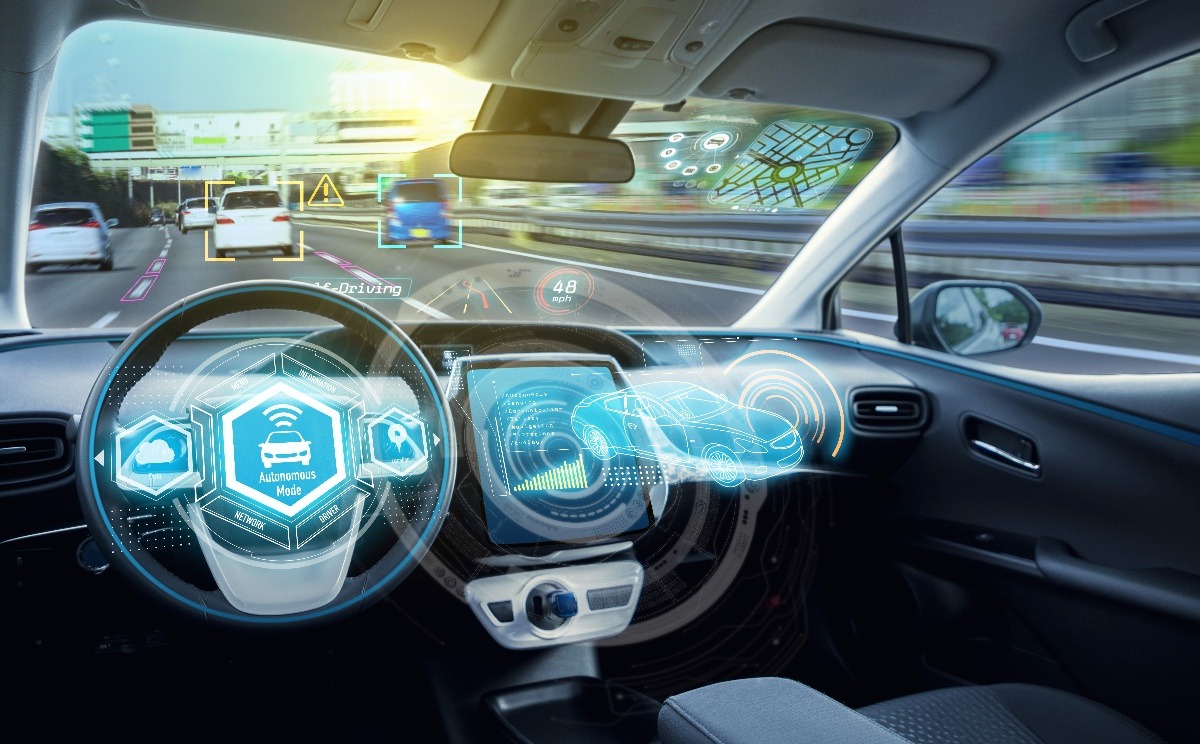
Artificial Intelligence
While AI may seem like a relatively new technology (courtesy of ChatGPT’ stratospheric rise in popularity), it actually is as old as digital computers, which date back to the 1940s. But what’s striking is that in just the last 10 years, computers’ language and image recognition capabilities exceeded those of humans and continue to advance. Late last year we got to experience AI’s language and image generation capabilities that just a year ago felt like it would take years to achieve. In March of this year, Bill Gates dramatically declared that “the age of AI has begun”, putting AI only second to the graphic user interface in the list of the most revolutionary computer technologies of his lifetime.
So what does this mean for fleet management? First, let’s recognize that fleet management is almost always a supporting function for the organization. Whether it’s a service company or product company, the fleet they own or lease is merely a tool to help enable or sustain their core business, which could be to transport goods, provide taxi services or build roads and bridges. With this in mind, the value around optimization that fleet management brings to the table is best to deliver in a way that minimizes human oversight and active involvement.
Let’s look at a specific example. Most fleet solutions have a dashboard with various fleet metrics, as well as a map showing vehicle locations. Those dashboards need to be set up based on the metrics fleet manager defines: fuel use, maintenance schedule, safety events, vehicle uptime, etc. I imagine future AI-powered fleet management systems will operate autonomously around both defining and optimizing such metrics.
Upon the initial system deployment a set of metrics will be defined and collected by AI to establish a baseline. Once established, the system will identify opportunities for improvement and take steps to leverage them. For example, to save fuel costs, it will point drivers to the cheapest gas stations at the perfect time (not to impact work schedule and not run out of fuel). Traffic-aware and traffic-predicting routing will minimize fuel used. In-cabin speakers will remind the drivers to minimize idling. The system may even automatically turn off the engine upon exceeding an acceptable threshold. Unsafe driving behavior warnings will be communicated to the driver right as they happen to help them self correct in real-time. Highly personalized driver coaching will be generated automatically and delivered to the driver via a mobile app on their device to go over during downtime.
AI-powered fleet management will collect and process a large volume of data points to continuously assess fleet performance and identify new opportunities for optimization. The goal will be not just to optimize fleet performance, but also minimize human oversight. It’s unlikely we’ll see the complete transition of fleet management responsibilities to an AI, but a substantial share of such responsibilities will migrate. AI will become a highly intelligent and trusted co-pilot (to utilize Microsoft’s “AI speak”) to a fleet manager, will absorb an immense amount of manual oversight and tedious management tasks.
Self-driving cars
A prolific technology analyst Benedict Evans recently made a compelling observation on this topic. Five years ago it seemed like autonomous driving was almost here. And it now appears that progress significantly slowed down at roughly 80% on the way to the truly autonomous car future. Numerous companies continue their work (Example 1, Example 2), but getting to 100% may take another decade or so, especially considering that regulatory hurdles are expected to be not any less daunting than technological.
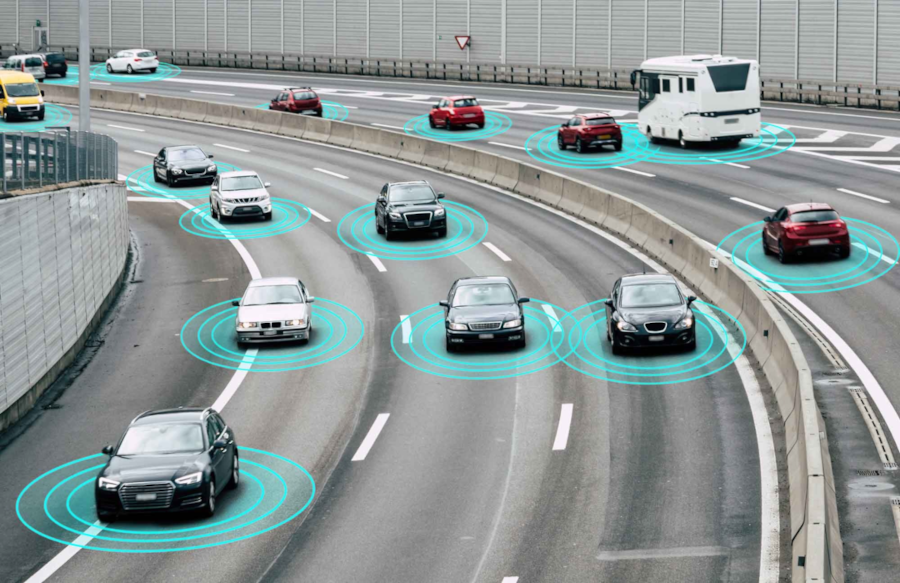
But as many will agree, it’s not a matter of if, it’s a matter of when. So whenever fleets get equipped with fully autonomous vehicles, what will it do to fleet management function?
An obviously large impact will be on safety. Human drivers get tired, frustrated, impatient, angry, and distracted. Computers that will take over as drivers, don’t. The responsibility around overseeing the whole safety aspect of operating the fleet will shift from fleet managers to automotive manufacturers. This will resemble the way we view airbag technology. It’s there and expected to work, when needed. And the full responsibility for its correct and timely operation lies with the vehicle manufacturer. As a vehicle buyer and user, one cannot be expected to ensure airbags work. We just assume it does. Should it malfunction, the manufacturer will be held liable. Same expectation will apply to expecting safe driving of autonomous vehicles.
Of course vehicle maintenance to ensure safe operation would continue being a responsibility of a fleet manager. Technology may advance to the point that vehicle will perform a continuous self-diagnostics and not drive itself on public roads whenever a serious enough safety issue is detected. Ultimately, ADAS and DMS systems will likely become obsolete, as they are designed to assist human drivers.
As we discussed, unlike humans, computers are tireless, as long as electricity is supplied and runs through their IC chips and other components. Compliance requirements around minimal rest will stop being relevant. There might be other compliance laws, for example — around minimizing internal combustion vehicles in the fleet, etc. This brings us to the third trend to review.
Electric vehicles
The Earth is becoming an increasingly vulnerable place. Climate is changing at an unprecedented rate fueled by human activity. It’s estimated that 36.8 gigatons of carbon dioxide was released into the atmosphere in 2022 alone. Fossil-fuel powered transportation sector is a large contributor to climate change.
Transition from internal combustion engine vehicles to electricity powered one helps reduce emissions and improve air quality. This transition did not only start, but is accelerating. It’s estimated that out of 75 million passenger cars sold globally in 2022, 10 million were EVs. For EVs that was a 60% growth year-over-year, while overall market demand stagnated during this time. In fact it slightly reduced — by 0.5%
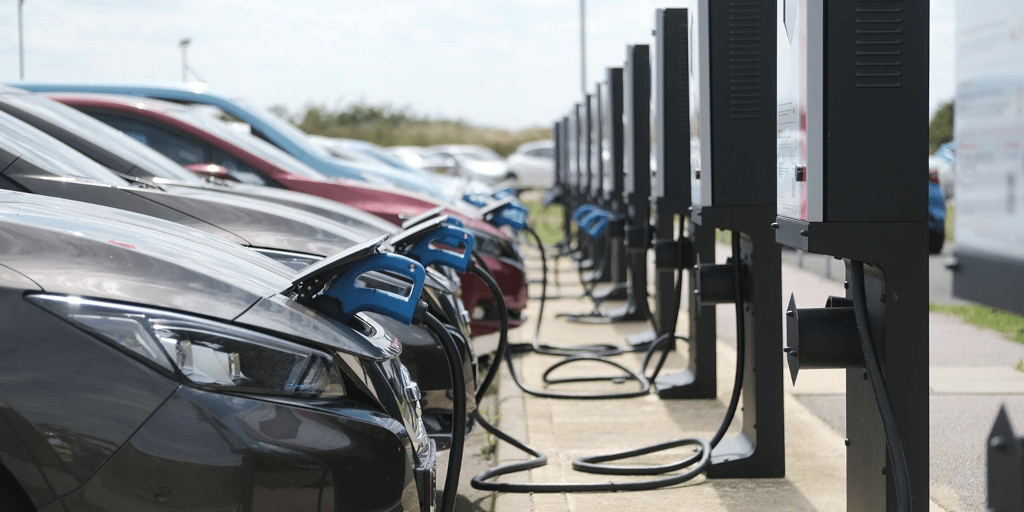
Large automakers are publicly committing to fully transitioning their manufacturing to electric vehicles in the coming decades. GM, Ford, Volkswagen, Mercedes-Benz, BMW, Audi — all set goals to completely phase out combustion engines globally between 2035 and 2050. 2035 is actually a hard deadline for Europe.
Transitioning their fleets to EVs is on many fleet managers’ minds. Among the challenges they come up against are: upfront costs (EVs are typically more expensive today than equivalent gas powered vehicles), range anxiety (range is typically less, sometimes significantly, than it is for comparable gasoline cars), charging infrastructure. At the same time there are significant benefits around lower maintenance costs, better air quality, improved public image.
Modern fleet management software platforms are getting up to speed on this important trend and enable EV-specific functionality to help fleet managers through the transition and during the ongoing management of “transitional” mixed gas/EV fleets. Such metrics as battery health, range (can change significantly based on the temperature of the environment), amount of charge are important to monitor and analyze.
There’s a whole new asset class that gets added to the oversight responsibilities of a fleet manager — that’s home charging infrastructure. It’s impractical to solely rely on public charging stations given the amount of time it takes to charge a vehicle and public charging costs, which are usually significantly higher than home charging rates (especially at night, when the demand placed on the electric grid is lower and rates are adjusted downwards). So part of EV transition is also deployment of home chargers to help maximize fleet uptime. Software capabilities to capture charging and status stats will have to become a part of every fleet telematics system.
flespi is behind 300 telematics platforms and projects globally. Just a year ago that number stood at 200. We serve as a backbone and a powerful toolkit to build custom and scalable telematics solutions. Fleet telematics is the largest vertical for us by far. Seeing new and innovative fleet solutions being built on flespi inspires and motivates our team every day.
As an old saying goes, people tend to overestimate the impact of technology in the short term and underestimate the effect in the long run. That is the reason we are focused on the long term. As fleet management evolves and transforms we are excited to ride the innovation wave and align ourselves with what’s coming.
